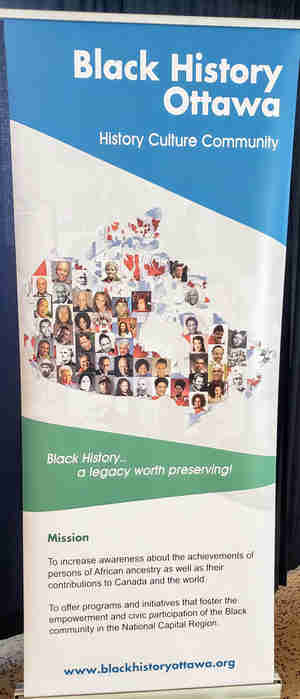Celebrating Black History in February and All Year Long
The Canadian Government’s 2025 theme for Black History Month was: “Black Legacy and Leadership: Celebrating Canadian History and Uplifting Future Generations.” This theme acknowledged the diversity of Black Canadians, the importance of Black leadership, and the legacy being built for future generations. Furthermore, that reality endures, and the legacy of valorizing Black lives and contributions must be built beyond the month of February throughout the year.
History of the Month
Black History Month was first formally recognized in Canada in 1995 when the Honourable Jean Augustine, first Black Canadian woman elected to Parliament, introduced a motion that recognized February as Black History Month (BHM). It was passed unanimously in the House of Commons. This heritage month highlights the rich and varied contributions of Canadians of African descent to every aspect of Canadian society and the long history of people of African descent in Canada. We must dedicate time throughout the year to exploring and celebrating the history of Canadians of African descent because their achievements are too often erased or unacknowledged, and the real history of Canada remains invisible to many Canadians.
History is Made by Everyone Every Day
Black History Month is a focused opportunity to share the stories, voices and accomplishments of people of African descent to Canadian society. However, acknowledging Black History as Canadian History allows us to reflect on why it is important to continually learn about individual and collective contributions by people like Canada’s first Black Cabinet Minister or Black Canadian scientists, and about contributions made by the Coloured Hockey League and challenges faced by contemporary Black NHL players. Different dimensions on WW II history can be illustrated by the exploits of the No. 2 Construction Battalion, and the experiences of Black train porters all named “George” add to the understanding of the evolution of workers’ and civil rights in Canada.
Such stories have rarely been taught in Canadian classrooms, and this knowledge cannot be meaningfully or completely transmitted within just one month in the middle of the school year. These critical aspects of Canadian history make the most sense weaved into the subject matter (social studies, science, language studies, etc.) as narratives unfold and historical events are presented throughout the academic year.
Impact of the Gaps
Increasing incidents of racial slurs and bias aimed at Black students in elementary and secondary schools has made the work of educating our children about the history and ongoing contributions of Canadians of African descent even more urgent. When students do not have an opportunity to explore histories, voices, and identities different from their own, they are unable to develop awareness about the diverse world in which they exist. They are likely to formulate misconceptions, biases and stereotypes about groups of people, which in turn manifests into racist behaviour that negatively affects the entirety of the lives of Black Canadians. Anti-Black Racism in the Early Years. When we present a curriculum to our students that does not reflect the lived experiences of the people of Canada, we limit their potential to become conscious, critical individuals, with an awareness about the world. When history is taught through a lens of white identity, the complex history and contributions of people of African descent are too often reduced to narratives about enslavement and social exclusion. The full humanity of people of African descent is excluded in favour of elevating the stories of white writers, colonizers, artists, scientists, and mathematicians.
Both white and racialized children are harmed by curricula that uphold white supremacy. Racialized children are directly impacted by such racist actions by being made to feel unsafe and unworthy in their own school. White children are also impacted by developing a false sense of superiority and by continuing to uphold and perpetuate practices and policies that harm racialized people.
When curricula include a diversity of lived experiences, students internalize the idea that everyone’s humanity is valued and equally worthy. In particular, student achievement is improved among Black students when they see themselves represented in the curricula. Black Canadians and Public Education They also learn that lived experiences are impacted by identity, and all students learn to see the ways in which existing policies and practices disproportionately harm people of some identities while helping others. Critical thinking about these inequities can spur both reflection and action among students and educators alike in order to overcome them and devise solutions for a future that is very different from the past.
Towards an Anti-Racist Future in Education
Parents for Diversity (P4D) is committed to empowering families and equipping educators to explore and celebrate Black History Month and to incorporate the history and achievements of Canadians of African descent every month. We encourage parents to find ways to celebrate BHM in ways that don’t result in cultural appropriation or reduction of Black Canadian culture to stereotypes. We also have published a prior post with recommendations for how to prepare to teach during BHM here .
Please also explore our other resources that reinforce parents’ and educators’ efforts to impart values of equity and anti-racism including the Diversity and Uthabiti libraries. We also have a post here and curated suggestions of resources to incorporate the history and achievements of Canadians of African descent every month in various subjects, like government, media, and STEM. (Blacbiblio ; 28 Moments of Black Canadian History ; Black People’s History of Canada ; Black STEM Innovators ; Teaching Black History ; Kayak lessons in Canada’s History)
P4D has also made available to the community a relaunch of a unique educational tool that highlights key elements of Black Canadian history. Inspired by the Lakeland Public Library, we have created, and this year elaborated on, a Periodic Table of Black Canadian History. Each “element” is a Canadian of African descent who has made a significant contribution to Canada. Each square includes a scannable QR code linking to a website where students, educators, staff, and administration can read about the lives and achievements of each person.



